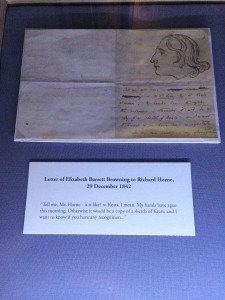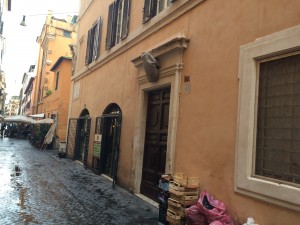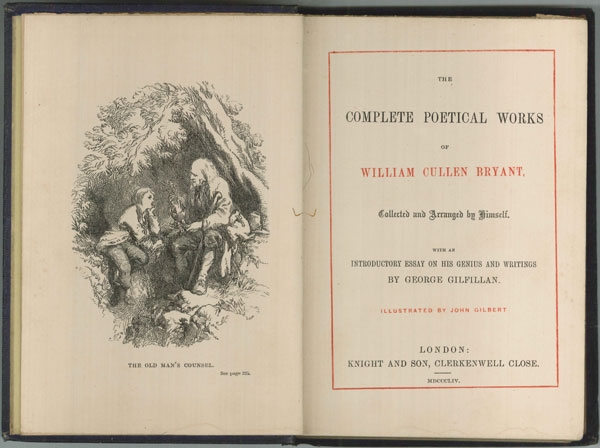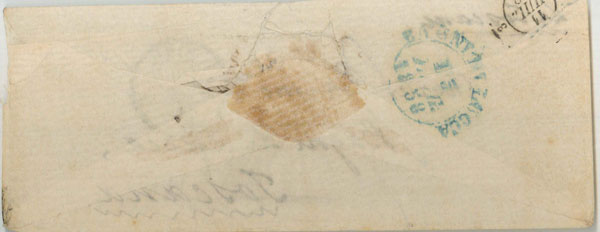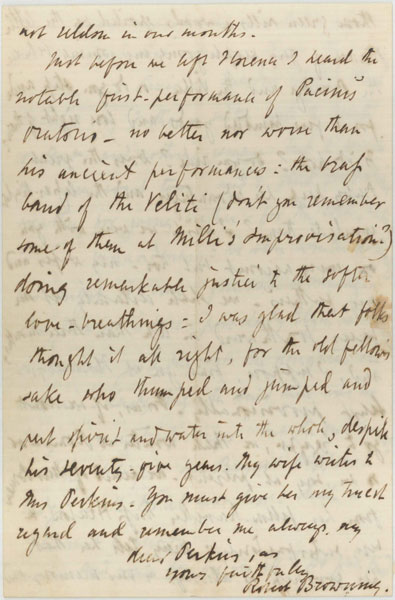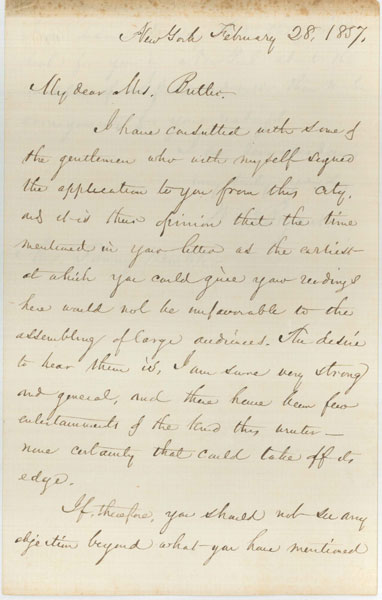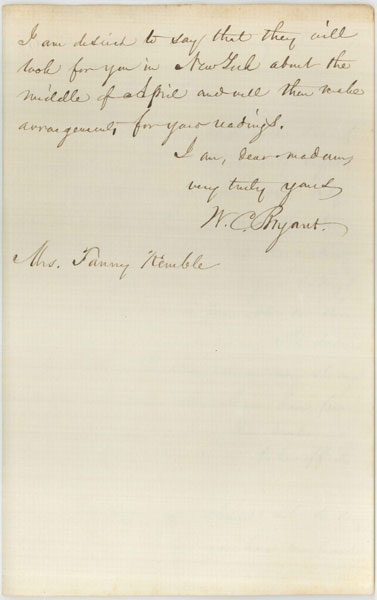By Jennifer Borderud, Associate Director and Access and Outreach Librarian
On this day—June 29—in 1861, poet Elizabeth Barrett Browning died in Florence, Italy, and was buried two days later in the English Cemetery there. In March of this year—2016—my husband Josh and I had the opportunity to travel to Italy, the place Robert and Elizabeth Barrett Browning called home during their 15 years of marriage, with faculty, students, and friends of Baylor’s George W. Truett Theological Seminary. The nine-day trip, which included stops in Rome, Pompeii, Herculaneum, and Florence, was part of a course on early Roman Christianity taught by our good friend Dr. Joel Weaver.
The itinerary was full with guided tours of the Basilica of St. Paul Outside the Walls, the Colosseum and the Roman Forum, the Basilica of St. John Lateran, and the Catacombs of St. Sebastian in Rome; St. Peter’s Basilica and the Sistine Chapel in Vatican City; the ruins of Pompeii and Herculaneum at the foot of Mount Vesuvius; and the Cathedral of Santa Maria del Fiore, the Piazza della Signoria, and the Accademia Gallery in Florence. Despite the ambitious agenda, my husband and I (and at times an interested seminarian or two) used the free time we were given in Rome and Florence to seek out sites related to the Brownings and their circle.
In Rome, we visited the Keats-Shelley House, a museum dedicated to the English Romantic poets who were enamored with and influenced by Rome. John Keats died in this house in 1821 in a room on the second floor overlooking the Spanish Steps. On display throughout the house were books, manuscripts, and other items relating to the lives and works of Byron, Shelley, and Keats. There were items relating to the Brownings as well.
After our visit to the museum, a short walk took us to the doorstep of Bocca di Leone 43, where the Brownings lived during extended winter stays in Rome. A plaque at the corner of the street commemorates the Brownings’ residency.
Heading quickly back toward the Spanish Steps, we had just enough time to take a taxi to Rome’s Non-Catholic Cemetery (Il Cimitero Acattolico di Roma). Located adjacent to the Pyramid of Caius Cestius, the Non-Catholic Cemetery is the burial place of both John Keats and Percy Shelley. American sculptor and Browning friend William Wetmore Story and his wife Emelyn are also buried there. I had seen photographs of the grave stone Story designed for his wife, called the Angel of Grief, and was particularly interested in seeing it in person. It was stunningly beautiful. Not long after we returned to Waco from Italy, I learned that a replica of Story’s Angel of Grief could be found in Waco’s Oakwood Cemetery, practically in my own backyard.
We only spent a day and a half in Florence, but we had just enough free time to make two important stops. After walking across the Ponte Vecchio, we found our way to Casa Guidi, the Brownings’ primary home in Italy, which has been restored to look as it did when the Brownings lived there. We stood in the salon where Elizabeth spent time writing Casa Guidi Windows and Aurora Leigh, and we walked along the balcony where Robert and Elizabeth would take walks and where Elizabeth watched processions celebrating political victories.

Jennifer Borderud with Julia Bolton Holloway (left) and a Roma woman who takes care of the cemetery (center)
We did not have time to visit the nearby Pitti Palace and Boboli Gardens, which were frequented by the Brownings. However, we did visit the Protestant Cemetery (Cimitero degli Inglesi), where we met Julia Bolton Holloway, the custodian of the cemetery, who works with the Roma people to maintain the cemetery and grounds. We also laid flowers on Elizabeth Barrett Browning’s grave to honor her life and work.
We had a wonderful week, and while there are more Browning sites to see, we understand why they loved Italy. We also made sure to rub the bronze boar’s snout in the Mercato Nuovo to ensure our return to Florence and another opportunity to follow in the footsteps of the Brownings.
Thank you to Dr. Joel Weaver and Dr. Steve Reid and to the students and friends of the George W. Truett Theological Seminary for letting us explore Italy with you.

Faculty, students, and friends of the George W. Truett Theological Seminary, Vatican City, 8 March 2016


